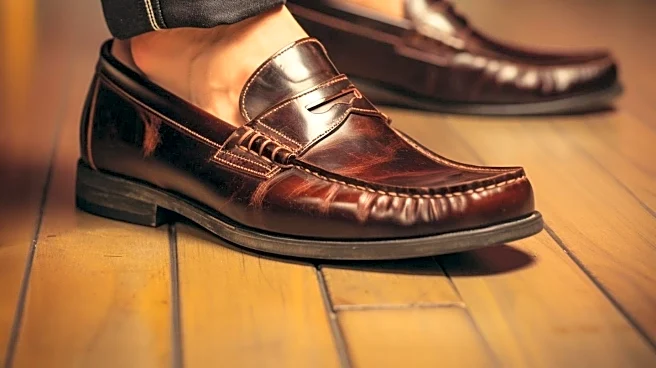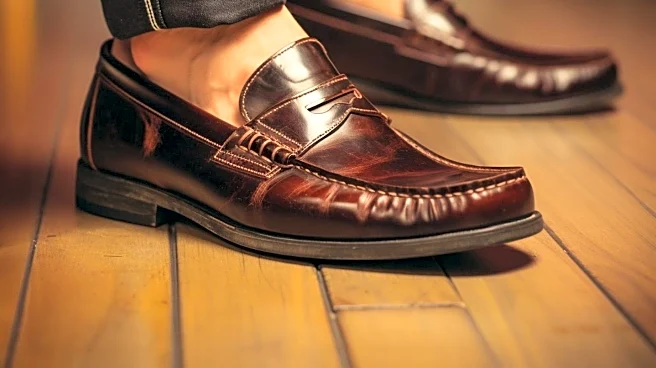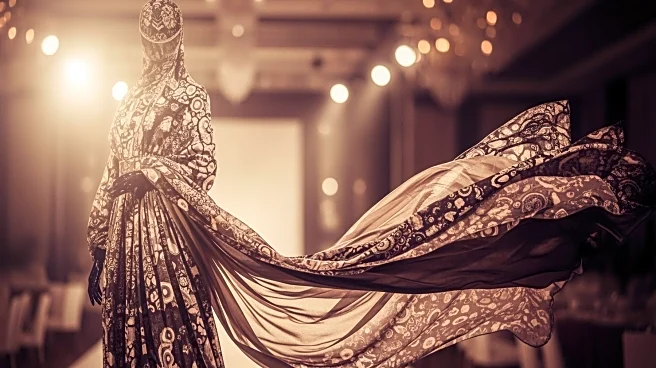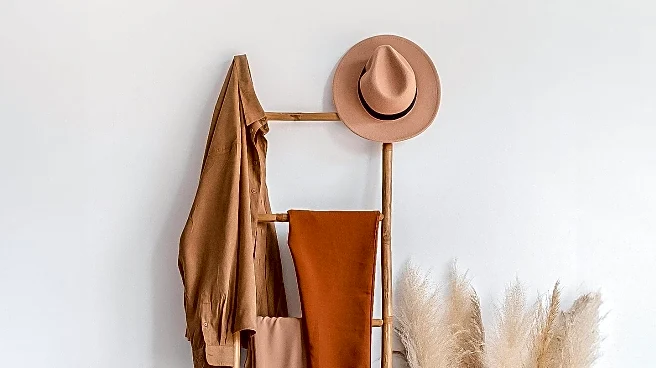What's Happening?
The penny, a staple of American currency for over two centuries, is being phased out due to its high production costs and diminishing use. Despite this, the penny loafer, a shoe style that originated in the 1930s,
remains a popular fashion choice. The penny loafer was first introduced by G.H. Bass as the 'Weejun,' inspired by Scandinavian designs, and quickly became a cultural icon. It has been associated with Ivy League fashion and 90s minimalism, and continues to be a versatile wardrobe staple. Fashion insiders and celebrities alike favor penny loafers for their adaptability, pairing them with various outfits ranging from tailored suits to casual jeans.
Why It's Important?
The discontinuation of the penny highlights a shift in economic practices, reflecting changes in consumer behavior and currency usage. However, the enduring popularity of penny loafers underscores the shoe's cultural significance and its ability to transcend economic trends. As the penny fades from circulation, the fashion industry continues to celebrate the loafer's timeless appeal, demonstrating the shoe's role as a versatile and ageless accessory. This trend may influence fashion retailers and designers to innovate and expand their offerings of classic styles, catering to consumers seeking both nostalgia and practicality.
What's Next?
With the penny's discontinuation, fashion brands may capitalize on the nostalgia associated with penny loafers, potentially leading to new designs and marketing strategies that emphasize the shoe's historical significance. Retailers might see an increase in demand for penny loafers, prompting them to explore collaborations with designers to create unique variations. Additionally, the fashion industry could witness a resurgence in classic styles, as consumers look for items that offer both style and sentimental value.
Beyond the Headlines
The penny's removal from circulation raises questions about the future of physical currency and its role in a digital economy. As society moves towards cashless transactions, traditional symbols like the penny loafer may gain new cultural significance, representing a connection to past economic practices. This shift could also spark discussions on sustainability in fashion, as consumers and brands consider the environmental impact of producing and maintaining classic styles.











